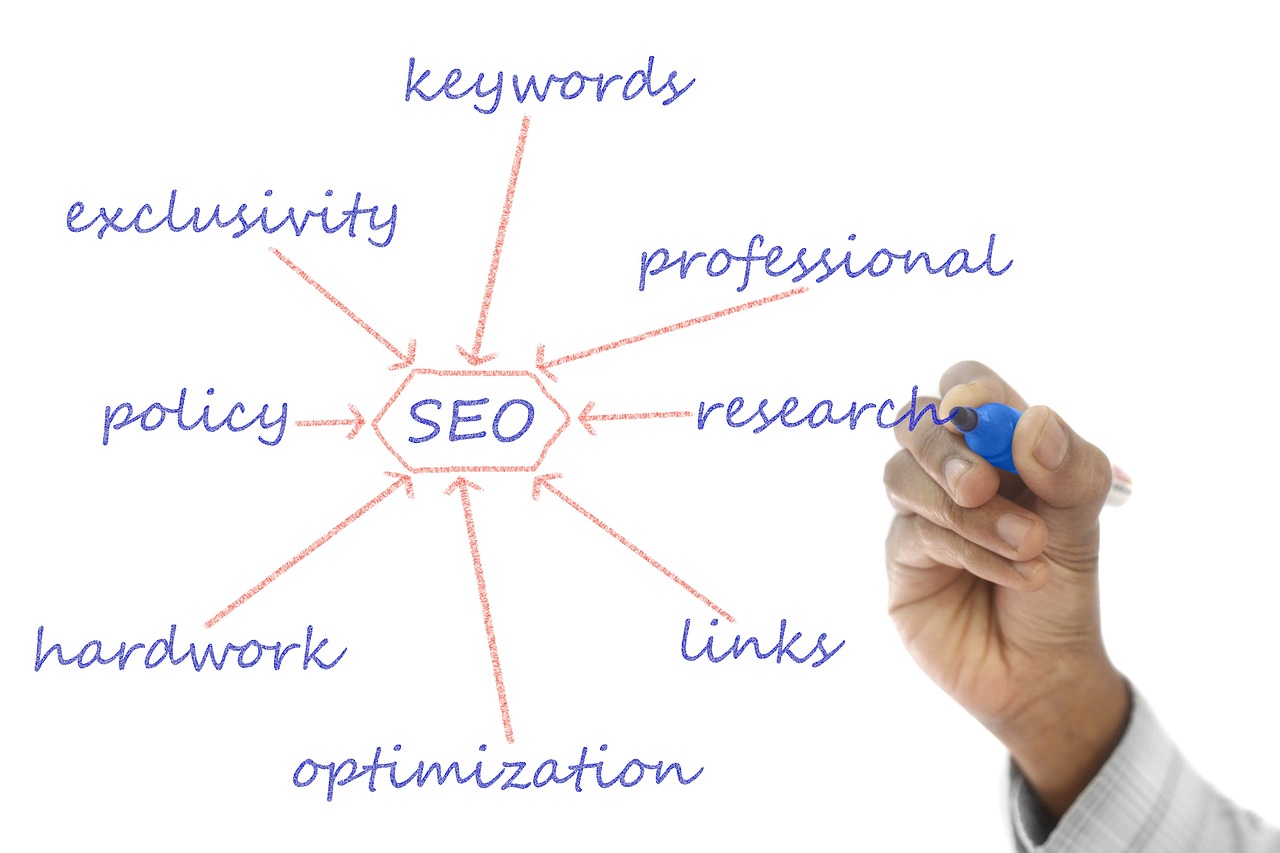This Article has been revised, edited and added to, by Poulomi Chakraborty.
- The Importance of Keyword Research for E-Commerce SEO
- Optimizing On-Page Elements for E-Commerce SEO
- Leveraging Technical SEO for E-Commerce Sites
- Building High-Quality Backlinks
- Enhancing User Experience with UX/UI Optimization
- Utilizing Content Marketing for E-Commerce SEO
- Enhancing Off-Page SEO for E-Commerce
- Local SEO Strategies for E-Commerce
- Monitoring and Measuring SEO Performance
- Staying Updated with SEO Trends
- Conclusion
In the bustling world of e-commerce, standing out from the crowd is crucial. With millions of businesses competing for attention online, having a solid SEO strategy for your B2C website can make all the difference. SEO, or Search Engine Optimization, is the process of improving your website’s visibility on search engines like Google. When done correctly, SEO can drive more organic traffic to your site, leading to higher sales and better brand recognition. This article will delve into the best practices for optimizing your B2C e-commerce site, ensuring that you capture and convert as much traffic as possible.
Optimizing an e-commerce site for SEO is different from optimizing a regular website or blog. Unlike a blog, which may focus on long-form content and keyword density, an e-commerce site must balance product descriptions, images, and user experience. It’s not just about getting visitors to your site; it’s about keeping them there and converting them into customers. This requires a nuanced approach that combines technical SEO, on-page optimization, and off-page strategies.
The Importance of Keyword Research for E-Commerce SEO

Keyword research is the foundation of any successful SEO strategy. It involves identifying the terms and phrases that potential customers use when searching for products like yours. For e-commerce sites, this means finding keywords that not only drive traffic but also convert visitors into buyers.
Comparing Short-Tail and Long-Tail Keywords
Short-tail keywords are broad and generic, often consisting of one or two words. For example, “shoes” or “running shoes.” These keywords have high search volumes but also high competition. Ranking for short-tail keywords can be challenging, especially for new or smaller e-commerce sites.
Long-tail keywords, on the other hand, are more specific and usually consist of three or more words. Examples include “women’s running shoes size 7” or “best shoes for marathon training.” While these keywords have lower search volumes, they tend to have higher conversion rates because they target users who are further along in the buying process.
For e-commerce sites, focusing on long-tail keywords can be more effective. These keywords attract highly targeted traffic and reduce the competition, making it easier to rank higher in search results.
Incorporating both short-tail and long-tail keywords into your SEO strategy can help you capture a broader audience while still targeting specific, high-intent searches.
Tools for Effective Keyword Research
To find the best keywords for your e-commerce site, you can use tools like Google Keyword Planner, Ahrefs, and SEMrush. These tools provide insights into search volume, competition, and keyword difficulty, helping you to identify the most valuable keywords for your business.
Using these tools, start by brainstorming a list of potential keywords related to your products. Then, analyze each keyword’s search volume and competition level. Aim to find a balance between high search volume and low competition.
Additionally, look for keywords with commercial intent, such as “buy,” “discount,” or “deal,” as these are more likely to convert.
Integrating Keywords into Your Content
Once you’ve identified your target keywords, the next step is to integrate them into your website content. This includes product titles, descriptions, meta tags, and URLs. However, avoid keyword stuffing, which can harm your SEO efforts. Instead, aim for natural and seamless integration of keywords.
For example, instead of writing a product description like this: “Our running shoes are the best running shoes for running,” opt for a more natural approach: “Discover our top-rated running shoes, designed for comfort and performance.” This not only improves readability but also enhances the user experience.
Optimizing On-Page Elements for E-Commerce SEO
On-page SEO is critical for ensuring that your website is search engine-friendly. It involves optimizing various elements on your site to improve visibility and relevance for targeted keywords. In e-commerce, this means paying close attention to product pages, category pages, and the overall site structure.
Crafting Effective Product Titles and Descriptions
Product titles and descriptions are vital for both user experience and SEO. They should be clear, concise, and informative, incorporating relevant keywords naturally. An effective product title should immediately convey what the product is and include key attributes such as brand, model, and type.
For example, “Nike Air Max 270 Women’s Running Shoes” is much more descriptive and keyword-rich than simply “Running Shoes.”
Product descriptions should provide detailed information about the product, including features, benefits, and use cases. Avoid duplicate content by ensuring that each product description is unique.
This not only helps with SEO but also enhances the user experience by providing valuable information to potential customers. Include long-tail keywords in your descriptions to capture specific search queries and improve your chances of ranking for those terms.
Optimizing Meta Tags and URLs
Meta tags, including meta titles and descriptions, play a significant role in how your pages appear in search engine results. The meta title should be compelling and include your primary keyword. It should also be concise, typically between 50-60 characters, to ensure it displays correctly in search results.
The meta description, while not a direct ranking factor, influences click-through rates. It should provide a brief overview of the page’s content and include a call-to-action (CTA) to encourage clicks.
URLs should be clean, descriptive, and include relevant keywords. For example, a URL like “yourstore.com/nike-air-max-270-womens-running-shoes” is much better than “yourstore.com/product12345.” Descriptive URLs help search engines understand the page content and improve the user experience by making URLs easy to read and remember.
Utilizing Structured Data Markup
Structured data, or schema markup, helps search engines understand the content of your pages and display rich snippets in search results. For e-commerce sites, using structured data can enhance listings with additional information such as product ratings, prices, and availability.
This can improve click-through rates by making your listings more attractive and informative.
Implement structured data for products, reviews, and other relevant elements on your site. Use tools like Google’s Structured Data Markup Helper to create and implement schema markup correctly.
Regularly test your markup using Google’s Rich Results Test to ensure there are no errors and that the markup is being interpreted correctly by search engines.
Enhancing User Experience (UX) and Site Navigation
A positive user experience is crucial for both SEO and conversions. Search engines favor sites that provide a good UX, as it indicates quality and relevance. For e-commerce sites, this means having an intuitive navigation structure, fast loading times, and mobile-friendly design.
Ensure that your site is easy to navigate, with a clear hierarchy and logical structure. Use breadcrumb navigation to help users and search engines understand the site structure and improve internal linking.
Fast loading times are critical, as slow pages can lead to high bounce rates and lower search rankings. Optimize images, use efficient coding practices, and leverage browser caching to improve load times.
Mobile optimization is essential, given the increasing number of users shopping on mobile devices. Implement a responsive design that adjusts to different screen sizes and provides a seamless shopping experience across all devices. Test your site on various devices and browsers to ensure consistency and usability.
Creating High-Quality, Engaging Content
Content marketing is a powerful tool for driving organic traffic and building brand authority. In addition to product pages, consider creating blog posts, guides, and other content that addresses the interests and needs of your target audience. This content should be informative, engaging, and optimized for relevant keywords.
For example, a clothing retailer might create a blog post on “How to Style Summer Dresses” or a guide on “Choosing the Right Running Shoes.” These pieces can attract potential customers at different stages of the buying journey and encourage them to explore your products further. Use internal links to connect these content pieces to relevant product pages, driving traffic and improving SEO.
Leveraging Technical SEO for E-Commerce Sites

Technical SEO involves optimizing your website’s infrastructure to ensure that search engines can crawl and index your pages efficiently. For e-commerce sites, technical SEO is crucial because it directly affects how search engines view and rank your website.
Ensuring Your Site is Crawlable and Indexable
The first step in technical SEO is to ensure that search engines can crawl and index your site effectively. Use tools like Google Search Console to monitor your site’s performance and identify any crawl errors. Submit a sitemap to Google to help search engines understand the structure of your site and index your pages more efficiently.
Ensure that your robots.txt file is correctly configured to allow search engine bots to crawl important sections of your site. Avoid blocking essential pages or sections, as this can prevent search engines from indexing your content. Regularly check for and fix any broken links, as they can hinder the crawling process and negatively impact your SEO.
Implementing a Secure (HTTPS) Connection
Security is a critical factor for both user trust and SEO. Google uses HTTPS as a ranking signal, meaning that sites with a secure connection are likely to rank higher than those without. Ensure that your e-commerce site uses HTTPS by installing an SSL certificate. This not only improves your SEO but also protects your customers’ data and builds trust.
A secure connection is particularly important for e-commerce sites, as users need to feel confident that their personal and payment information is safe. Display security badges and trust signals prominently on your site to further reassure customers.
Optimizing for Mobile Usability
With a significant portion of online shopping done on mobile devices, optimizing for mobile usability is crucial. Google uses mobile-first indexing, meaning it primarily uses the mobile version of your site for ranking and indexing. Ensure that your e-commerce site is fully responsive and offers a seamless experience on mobile devices.
Test your site’s mobile usability using Google’s Mobile-Friendly Test tool. Address any issues that could hinder the mobile user experience, such as small text, touch elements too close together, or horizontal scrolling. A mobile-friendly design not only improves your SEO but also enhances user satisfaction and conversion rates.
Improving Site Speed
Site speed is a critical factor for both user experience and SEO. Slow-loading pages can lead to high bounce rates, lower conversion rates, and reduced search rankings. Use tools like Google PageSpeed Insights to analyze your site’s speed and identify areas for improvement.
Optimize images by compressing them without compromising quality. Use a content delivery network (CDN) to serve your content more quickly to users across different geographic locations.
Minimize the use of heavy scripts and plugins that can slow down your site. Implement browser caching to store frequently accessed data, reducing load times for returning visitors.
Implementing Structured Data for E-Commerce
Structured data helps search engines understand the content on your site and can enhance your search listings with rich snippets. For e-commerce sites, implementing structured data can highlight product details, prices, reviews, and availability in search results, making your listings more attractive and clickable.
Use schema markup to provide detailed information about your products. This includes the product name, description, price, availability, and reviews. Structured data can also be used for breadcrumbs, which improve site navigation and user experience. Regularly test your structured data using Google’s Rich Results Test to ensure it is implemented correctly and functioning as expected.

Building High-Quality Backlinks
Backlinks from reputable sites are a strong signal to search engines that your site is trustworthy and authoritative. Building high-quality backlinks is essential for improving your site’s domain authority and search rankings.
Identifying Link-Building Opportunities
Identify opportunities for earning backlinks by analyzing your competitors’ backlink profiles. Use tools like Ahrefs or SEMrush to see which sites are linking to your competitors and reach out to these sites with your content or partnership proposals.
Look for industry-specific directories, blogs, and forums where you can contribute valuable content and earn backlinks.
Consider guest blogging on reputable sites within your niche. Offer to write high-quality articles that provide value to their audience in exchange for a backlink to your site. This not only helps you build backlinks but also positions you as an authority in your industry.
Creating Link-Worthy Content
Creating high-quality, link-worthy content is one of the most effective ways to attract backlinks naturally. Focus on producing in-depth guides, original research, infographics, and other types of content that offer unique value to your audience.
Content that is informative, well-researched, and visually appealing is more likely to be shared and linked to by other websites.
For example, if you run a fitness e-commerce site, you could create a comprehensive guide on “The Ultimate Home Workout Routine” or conduct a survey on “Fitness Trends for 2024” and publish the results. Promote your content through social media, email newsletters, and outreach campaigns to increase its visibility and attract backlinks.
Enhancing User Experience with UX/UI Optimization

User experience (UX) and user interface (UI) play a crucial role in the success of your e-commerce site. A well-designed site not only attracts visitors but also keeps them engaged, encouraging conversions and repeat visits.
Simplifying Navigation and Site Structure
A clear and intuitive site structure is essential for a positive user experience. Organize your products into logical categories and subcategories, making it easy for visitors to find what they’re looking for. Use breadcrumb navigation to help users understand their location within the site and easily navigate back to previous pages.
Ensure that your main menu is simple and uncluttered, with clear labels for each category. Avoid overwhelming users with too many options, and consider using a mega menu if you have a large inventory.
This type of menu displays all your categories and subcategories at once, providing an overview of your offerings without requiring multiple clicks.
Optimizing Product Pages for Conversions
Product pages are where the magic happens in e-commerce. Optimizing these pages for conversions involves several key elements. First, ensure that your product images are high-quality and provide multiple views of the product. Allow users to zoom in on images to see details, which can help them make informed purchasing decisions.
Product descriptions should be informative and engaging, highlighting the key features and benefits of the product. Use bullet points to break down complex information and make it easier to read. Include user-generated content, such as reviews and ratings, to build trust and provide social proof.
Make sure your call-to-action (CTA) buttons are prominent and compelling. Use action-oriented language like “Add to Cart” or “Buy Now” and place the buttons in a location that’s easy to find. Additionally, display stock levels and availability to create a sense of urgency and encourage immediate purchases.
Implementing a Seamless Checkout Process
A complicated or lengthy checkout process can lead to cart abandonment and lost sales. Simplify your checkout process by minimizing the number of steps required to complete a purchase. Allow guest checkout options to cater to users who don’t want to create an account.
Clearly display shipping options and costs early in the checkout process to avoid surprises. Offer multiple payment methods, including credit cards, PayPal, and other popular payment gateways. Ensure that your checkout forms are user-friendly, with clear instructions and error messages that guide users through the process.
Personalizing the Shopping Experience
Personalization can significantly enhance the shopping experience on your e-commerce site. Use data and insights about your customers to provide personalized product recommendations, tailored offers, and relevant content.
For example, show related products or items frequently bought together on product pages to encourage additional purchases.
Implementing a personalized email marketing strategy can also drive repeat business. Send personalized emails based on user behavior, such as abandoned cart reminders, product recommendations, and special offers for loyal customers.
Use segmentation to target specific groups of customers with relevant messages that resonate with their interests and needs.
Utilizing Content Marketing for E-Commerce SEO
Content marketing is a powerful way to drive traffic, build brand authority, and improve your SEO. For e-commerce sites, this means creating content that not only attracts visitors but also encourages them to make a purchase.
Creating Informative and Engaging Blog Posts
A blog is an excellent platform for sharing valuable content that attracts and engages your target audience. Write blog posts that address common questions, provide tips and advice, and showcase your products in action. For example, a beauty retailer could write posts on “Skincare Tips for Summer” or “How to Create a Flawless Makeup Look.”
Incorporate relevant keywords naturally into your blog posts to improve their SEO. Use internal linking to connect blog posts to related product pages, driving traffic and improving your site’s overall SEO. Encourage social sharing by including share buttons and creating content that resonates with your audience.
Developing Comprehensive Guides and Tutorials
Guides and tutorials are highly valuable content types that can attract and retain visitors. Create in-depth guides that cover topics related to your products and industry. For example, a home improvement store could create a guide on “How to Renovate Your Kitchen on a Budget” or a tutorial on “Installing a New Faucet.”
These guides not only provide value to your audience but also establish your brand as an authority in your field. Use a mix of text, images, and videos to make the content engaging and easy to follow. Promote your guides and tutorials through email marketing, social media, and other channels to drive traffic to your site.
Leveraging Video Content
Video content is highly engaging and can significantly boost your SEO. Create product demonstration videos, how-to tutorials, and customer testimonials to showcase your products and provide valuable information. Videos can help customers understand your products better and make informed purchasing decisions.
Optimize your video content for SEO by including relevant keywords in the title, description, and tags. Host your videos on platforms like YouTube and embed them on your product pages and blog posts. This not only improves your site’s SEO but also provides an additional channel for reaching your audience.
Using User-Generated Content
User-generated content (UGC) is a powerful way to build trust and engage your audience. Encourage your customers to share their experiences with your products through reviews, photos, and social media posts. Feature this content on your product pages, blog, and social media channels to provide social proof and inspire confidence in potential customers.
Create campaigns that encourage UGC, such as photo contests or hashtag challenges. Reward participants with discounts or other incentives to encourage more participation. UGC not only enhances your content marketing efforts but also helps you build a community around your brand.
Enhancing Off-Page SEO for E-Commerce

Off-page SEO refers to actions taken outside your website to impact your rankings within search engine results pages (SERPs). This includes building backlinks, social media marketing, and influencer collaborations. These strategies help to improve your site’s authority and credibility, which are essential for higher rankings.
Building High-Quality Backlinks
Backlinks are one of the most significant factors in determining your site’s authority. To build high-quality backlinks, focus on earning links from reputable and relevant websites.
Reach out to industry blogs and news sites with high domain authority to secure guest posting opportunities or coverage of your products. Offer valuable insights, original research, or exclusive content that encourages them to link back to your site.
Creating linkable assets on your website, such as in-depth guides, infographics, and research reports, can attract backlinks naturally. Promote these assets through email outreach and social media to increase their visibility and potential for earning backlinks.
Participating in industry forums and contributing valuable insights can also help you earn backlinks while positioning you as an expert in your field.
Leveraging Social Media for SEO
Social media platforms can play a vital role in your SEO strategy by driving traffic to your site and increasing brand awareness. Share your content, such as blog posts, guides, and product updates, across your social media channels to attract a broader audience.
Engage with your followers by responding to comments, asking questions, and participating in relevant conversations.
Social signals, such as likes, shares, and comments, can indirectly influence your search rankings by driving traffic and increasing the visibility of your content. Additionally, social media profiles often rank high in search results, providing an additional opportunity for potential customers to find and engage with your brand.
Collaborating with Influencers
Influencer marketing can significantly boost your e-commerce SEO by increasing your reach and earning high-quality backlinks. Partner with influencers who have a strong following within your target audience.
Collaborate on content such as product reviews, unboxings, and social media takeovers that can drive traffic to your site and generate buzz around your products.
Influencers can also create high-quality content that you can share on your website and social media channels. This not only provides valuable content for your audience but also enhances your site’s SEO by attracting backlinks and increasing your online visibility.
Local SEO Strategies for E-Commerce
For e-commerce businesses with physical locations or those targeting specific geographic areas, local SEO is essential. Optimizing your site for local searches can drive targeted traffic and improve your visibility in local search results.
Optimizing Google My Business
Google My Business (GMB) is a free tool that helps businesses manage their online presence across Google, including Search and Maps. Claim and optimize your GMB listing by providing accurate and detailed information about your business. Include your business name, address, phone number, website URL, and business hours.
Add high-quality photos of your storefront, products, and services to make your listing more attractive. Encourage satisfied customers to leave reviews on your GMB listing, as positive reviews can enhance your local search rankings and build trust with potential customers. Regularly update your listing with new photos, posts about promotions or events, and any changes to your business information.
Creating Localized Content
Creating content that targets local keywords and addresses local interests can improve your local SEO. Write blog posts, guides, and articles that focus on local events, news, and issues relevant to your business. For example, if you run a bakery, you could write about local food festivals, seasonal ingredients, or community events you’re involved in.
Include local keywords naturally in your content to increase your chances of ranking for local searches. For example, a blog post titled “The Best Summer Desserts in San Diego” is likely to attract local search traffic and engage readers interested in local culinary delights.
Building Local Citations
Local citations are online mentions of your business that include your NAP (Name, Address, Phone number) information. Citations can appear on business directories, local websites, and social platforms. Consistent and accurate citations help search engines verify your business’s existence and improve your local search rankings.
Submit your business information to reputable local directories, such as Yelp, TripAdvisor, and local chamber of commerce websites. Ensure that your NAP information is consistent across all listings to avoid confusion and potential penalties from search engines. Regularly audit your citations to ensure they remain accurate and up-to-date.
Monitoring and Measuring SEO Performance

Regularly monitoring and measuring your SEO performance is essential for understanding the effectiveness of your strategies and making data-driven decisions. Use a combination of tools and metrics to track your progress and identify areas for improvement.
Using Google Analytics and Search Console
Google Analytics and Google Search Console are invaluable tools for monitoring your website’s performance. Google Analytics provides insights into your site’s traffic, user behavior, and conversions. Track key metrics such as organic traffic, bounce rate, average session duration, and conversion rate to assess the effectiveness of your SEO efforts.
Google Search Console helps you monitor your site’s presence in Google search results. Use it to track your site’s performance for specific keywords, identify crawl errors, and submit sitemaps. Regularly review the Search Analytics report to see which queries are driving traffic to your site and adjust your keyword strategy accordingly.
Setting Key Performance Indicators (KPIs)
Setting KPIs helps you measure the success of your SEO efforts and stay focused on your goals. Common KPIs for e-commerce SEO include organic traffic, search rankings, conversion rate, average order value, and return on investment (ROI). Define specific, measurable goals for each KPI and regularly review your progress.
For example, if your goal is to increase organic traffic by 20% over the next six months, monitor your traffic data and identify the strategies that are contributing to this growth. Use this information to refine your SEO tactics and allocate resources to the most effective activities.
Conducting SEO Audits
Regular SEO audits help you identify issues that may be hindering your site’s performance and uncover opportunities for improvement. Conduct a comprehensive audit of your site’s technical SEO, on-page elements, and off-page factors. Use tools like Screaming Frog, SEMrush, and Ahrefs to analyze your site’s health and performance.
Identify and fix technical issues such as broken links, duplicate content, and slow-loading pages. Review your on-page SEO elements, including meta tags, headers, and content quality. Evaluate your backlink profile to ensure you’re earning high-quality links and disavowing any harmful ones.
Staying Updated with SEO Trends
SEO is constantly evolving, and staying updated with the latest trends and best practices is crucial for maintaining your competitive edge. Follow industry blogs, attend webinars, and participate in SEO communities to stay informed about the latest developments and algorithm updates.
Adapting to new trends and technologies can give you an advantage over competitors who are slower to respond. For example, voice search and mobile-first indexing are becoming increasingly important, and optimizing your site for these trends can help you capture more traffic and improve your search rankings.
Continuous Learning and Adaptation
SEO is not a one-time effort but an ongoing process that requires continuous learning and adaptation. Regularly review your SEO strategies, monitor your performance, and make data-driven adjustments to improve your results. Stay flexible and be willing to experiment with new techniques and tools to find what works best for your e-commerce site.
By staying proactive and committed to your SEO efforts, you can build a strong online presence, attract more organic traffic, and drive sustained growth for your e-commerce business.
Conclusion
Optimizing your B2C e-commerce website for SEO involves a multi-faceted approach that includes both on-page and off-page strategies. By focusing on keyword research, crafting effective product titles and descriptions, leveraging structured data, and ensuring a seamless user experience, you can enhance your site’s visibility and user engagement. Building high-quality backlinks, optimizing for local searches, and utilizing content marketing are crucial for driving targeted traffic.
Monitoring performance through tools like Google Analytics and Search Console helps you make data-driven decisions and continuously improve your SEO efforts. Staying updated with the latest SEO trends and adapting your strategies accordingly ensures long-term success. By implementing these best practices, you can improve your search engine rankings, attract more organic traffic, and ultimately drive more sales for your e-commerce business.
READ NEXT:
- Virtual Reality and Its Implications for Travel SEO
- How to Beat Big Brands in SEO as a Small Travel Agency
- How to Handle Negative Reviews and Their SEO Impacts
- SEO Strategies During a Travel Crisis
- Instagram SEO Strategies for Travel Influencers




















Comments are closed.